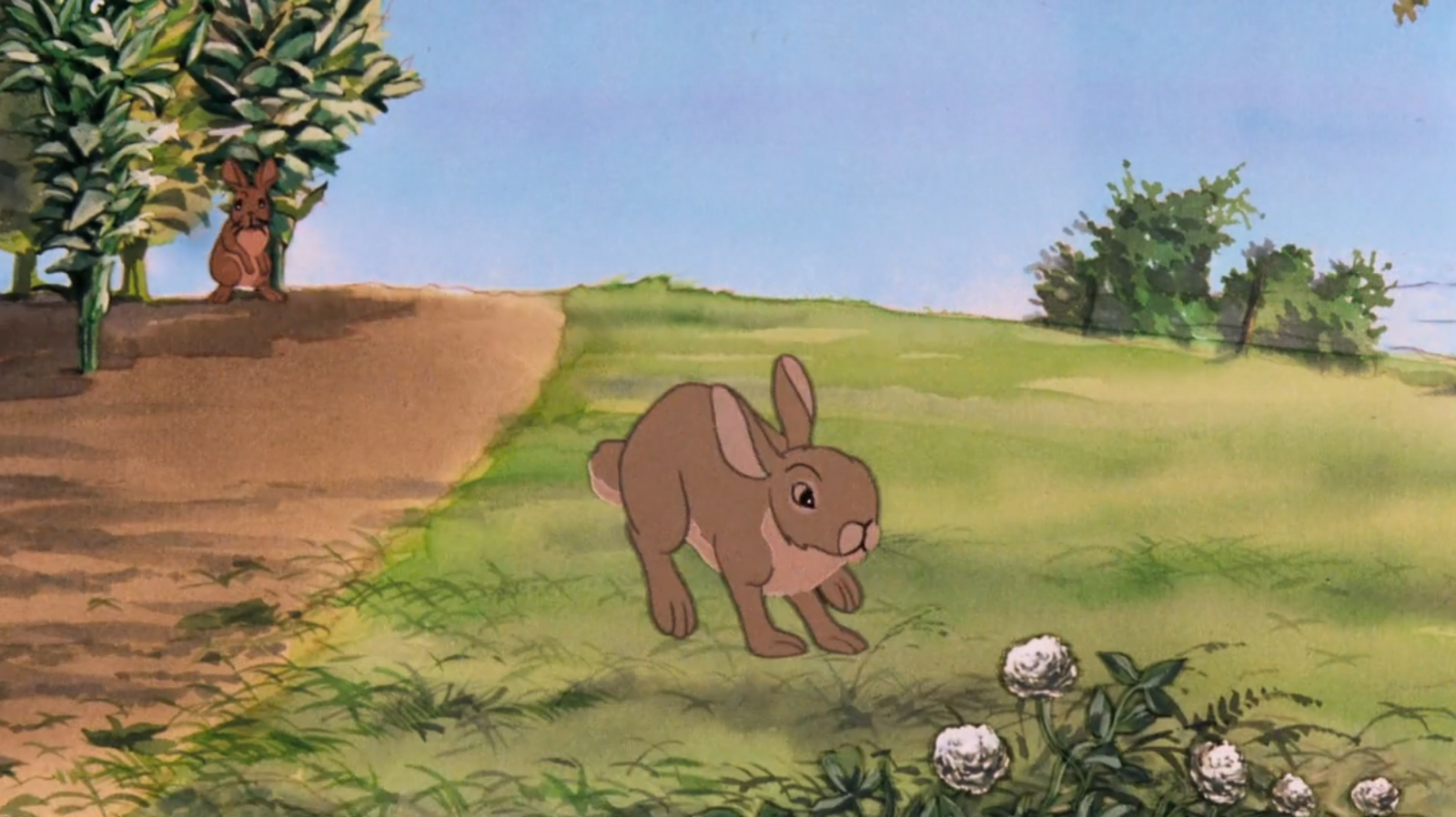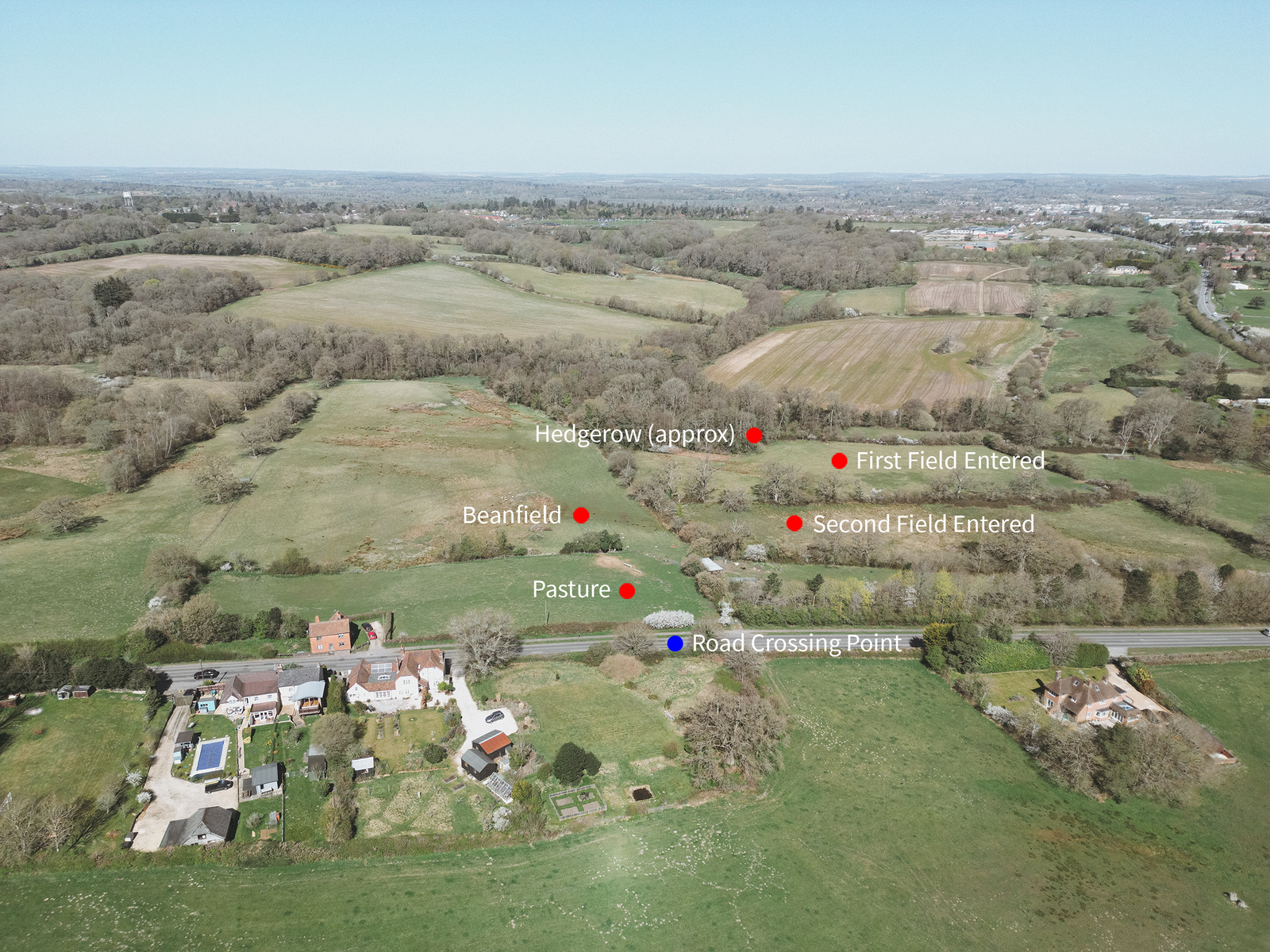On the Real Watership Down
The Beanfield
The Sandleford rabbits take shelter under a canopy of broad bean plants, but reveal the vulnerability of their position.
The strange fragrance was stronger now, coming over the top of the rise in a wave of scent that struck him powerfully—as the scent of orange-blossom in the Mediterranean strikes a traveller who smells it for the first time. Fascinated, he ran to the crest. Near-by was another hedgerow and beyond, moving gently in the breeze, stood a field of broad beans in full flower.
Hazel squatted on his haunches and stared at the orderly forest of small, glaucous trees with their columns of black-and-white bloom. He had never seen anything like this. Wheat and barley he knew, and once he had been in a field of turnips. But this was entirely different from any of those and seemed, somehow, attractive, wholesome, propitious.
Chapter Nine—The Crow and the Beanfield.
A view of the road at Newtown, looking to the beanfield and over to Sandleford Park.
It has fascinating how the novel and film differ on events immediately once the rabbits have made their way over the Enborne.
In the book (Chapter Nine, The Crow and the Beanfield) the rabbits rest in a hedgerow of thorns. Aware of the location’s insecurity, Hazel heads uphill, alone, to scout for better cover. He is lured by a striking, unfamiliar smell which he discovers to be coming from a field full of broad beans. He returns to wake the others and bring them with him to the superior shelter of the beanfield. On their way up to the beanfield, Fiver and the injured Pipkin—the two smallest rabbits lagging behind the rest of the group—are attacked by a crow before Bigwig makes a brief though successful intervention. This is a short chapter, highlighting that the vulnerable are a potential meal for even the most underwhelming predator. (Certainly, in real life, crows sometimes linger around warrens in the hope of being able to kill a kitten that has wandered too far.) Relief only comes when the rabbits finally make it under cover and Hazel is able to remove a thorn wedged into one of Pipkin’s paws.
Looking up through the beanfield from the bank of the Enborne. The field is a lot bigger than it seems.
In the film things are very different. In a glorious scene, the rabbits canter uphill past cows before coming to the road. They cross (more on that in the next section) before Hazel smells the aroma of the beanfield. Then comes the most devastating moment of the film so far. Whilst Bigwig and Hazel sleep under the bean plants, the group’s solitary doe, the sweet Violet, breaks cover to eat. Fiver stirs and catches sight of a buzzard as it swoops in. All that remains are a patch of Violet’s fur and Fiver’s hanging line, ‘Violet’s gone…’
This sequence is far more disturbing than the novel’s crow attack and is a lesson to all of the rabbits: danger is everywhere. Nonetheless, in spite of Fiver’s shock and the loss of Violet, Hazel remains stoical. More reserved and self-assured than in the novel, he simply suggests they all need to move on. Yes, Watership Down really was, and still is, the most brutal piece of animation passed by the BBFC as suitable for all ages. Poor Violet. At least I cared.
Fiver watches on as poor Violet breaks cover to eat.
Now, just where is the beanfield?
The precise location of the beanfield in the novel has been the topic of discussion on The Watership Down Podcast. A group of six or so fields cluster around the area where Hazel would have emerged on his scouting mission, but a compelling case has been made for the largest of these. If you’re interested in the wonderfully geekery of it all, then watch the eight minute episode below:
If you just want a brief summary, then carry on: The rabbits pass through two fields after leaving the hedgerow, before going into the beanfield. After resting, they move on through a pasture before coming to the road at Newtown. Their movements are neatly summarised in this graphic:
How the rabbits got to, and left, the beanfield on their journey to Watership Down.
With regard to the film, attempting to locate the beanfield is a pointless exercise. It is encountered after the road is crossed. I suppose you could argue that the location has simply shifted a short distance. However, given the shots of open countryside leading up to the discovery of the beanfield, I would suggest otherwise. It just simply doesn’t look like the area around Newtown. Not that this should be any surprise—the common that dominates the real landscape just doesn’t feature in the film at all.



